'Fall Factors and kN Ratings: What They Actually Mean' is part of the book - Trad Climbing Basics.
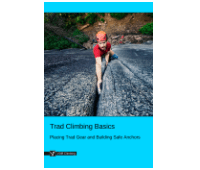
kN Ratings
kN ratings are shown on all your climbing gear: nuts, cams, slings and carabiners. kN stands for kilo Newtons. 1kN is about 100kg (220lbs for the Americans). So this nut will hold around 900kg.

This is Nelly. She weighs 850kg, so the 9kN nut would hold her weight – just.
But if Nelly climbed above the nut and then fell, she would put more force on the gear. This force would certainly exceed 900kg, causing the nut to break.
Every fall exerts a force greater than body weight – often many times more than your actual weight.
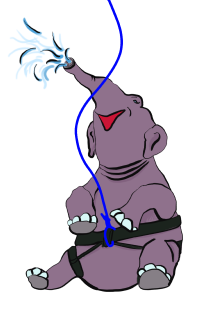
Your goal as a leader is to reduce the potential force on gear, therefore keeping the climb safe.
The exact force generated depends on:
- The distance fallen
- The climber’s weight
- The length of rope in the system
- Friction through gear in the system
- How dynamic the belay is
- How dynamic the rope is
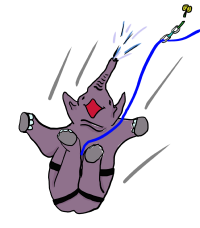
Fall Factors
The fall factor is the distance fallen divided by the length of rope in the system.
The higher the fall factor, the more force is applied to protection. This is why a bigger fall puts more force on gear.
If a climber falls 3 meters, when 10 meters up a pitch, the fall factor is 0.3.
If a climber falls 7 meters, when 10 meters up a pitch, the fall factor is 0.7.
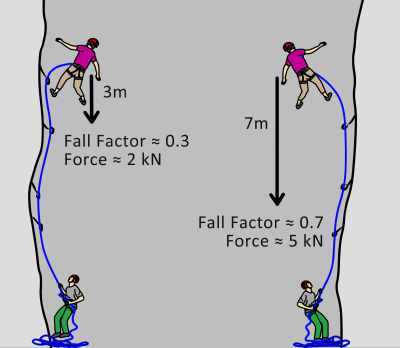
Similarly, a fall taken close to the belay puts a much larger force on protection than the same length of fall taken higher up the pitch.
If a climber falls 2 meters, when 20 meters up a pitch, the fall factor is 0.1.
If a climber falls 2 meters, when 3 meters up a pitch, the fall factor is 0.66.
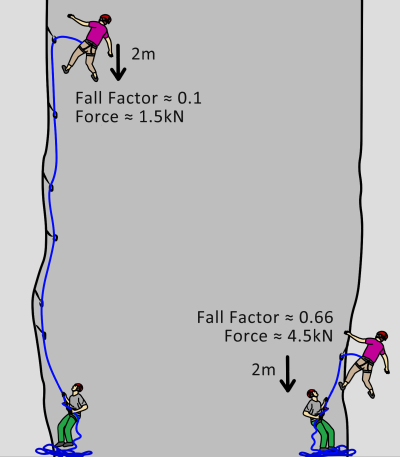
Warning - Factor 2 Falls
If a climber falls 2 meters, when 1 meter up the pitch (falling directly onto the anchor), the fall factor is 2. This puts a large force directly on the belay device which makes it hard to hold the fall.
It is important to eliminate the chance of a factor 2 fall by placing gear immediately off the belay.
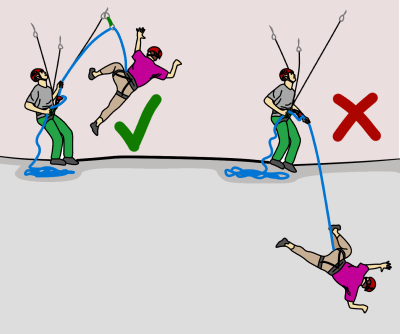
kN Ratings - Top Rope Vs Leader Fall Forces
Most lead falls have a fall factor of 0.2-0.7 and generate 2-5kN of force on the top piece of gear.
When top-roping, the distance fallen is minimal, therefore the fall factor is near zero. The force on the anchor will be the weight of the climber plus part of the weight of the belayer (around 1kN of force).
If there is slack in the system, the force will be a little higher, but still significantly less than the typical forces on gear during a leader fall.
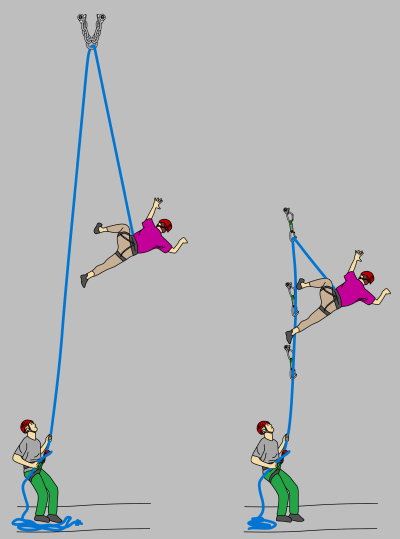
kN Ratings - Forces on Climbing Gear
Most medium/large sized trad gear is rated to about 10-14kN. This is strong enough to hold the most enormous fall you'll ever take. In most cases, the gear itself won’t break.
The weakest link in the system is usually the quality of the placement or the rock it is in (e.g: a 14kN nut in a suboptimal placement may be plucked out with a 2kN force).
Warning - Micro Gear
Tiny 'micro' cams and nuts have low strength ratings and will only hold small falls. If you take a massive whipper onto a 3kN nut, it'll probably break.
If your route is protected by small gear, make sure to place plenty of pieces and consider equalizing them to make a stronger point of protection.

Heavy Climbers
The heavier you are, the more force you apply to gear when you fall.
Heavier climbers should consider thicker ropes with low impact-force ratings, which can take more abuse than thinner ropes.
Heavyweights should beef up all anchors, place protection more often and make sure the belayer is able to take the load.
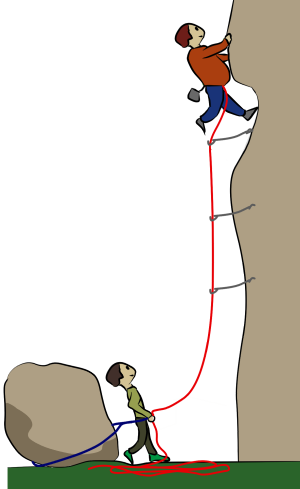
kN Ratings and Fall Factors Summary
It’s important for a leader to understand when potential forces may be high, and to place gear appropriately to reduce this. High forces can break micro gear, break the rock that holds bigger gear in place or pluck out poorly placed gear.
Extend gear when necessary to avoid rope drag. Rope drag reduces the effective amount of rope available to absorb the impact, which increases the fall factor. Never rely on a single piece of gear, especially if it has a low strength rating. If you're 'cruxing out' above unreliable gear, it's usually safer to down-climb to a place where you can rest and re-think your options.
The belayer’s role is to assist the leader in making these decisions. Often the belayer has a better perspective of the potential forces on gear. Let your partner know if they are creating a dangerous fall potential. You can also help by being ready to give an appropriate dynamic belay.
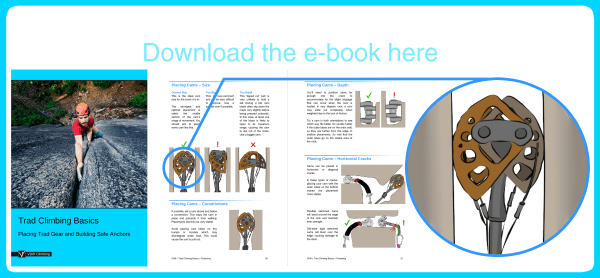





6 thoughts on “Fall Factors and kN Ratings: What They Actually Mean”
Comments are closed.